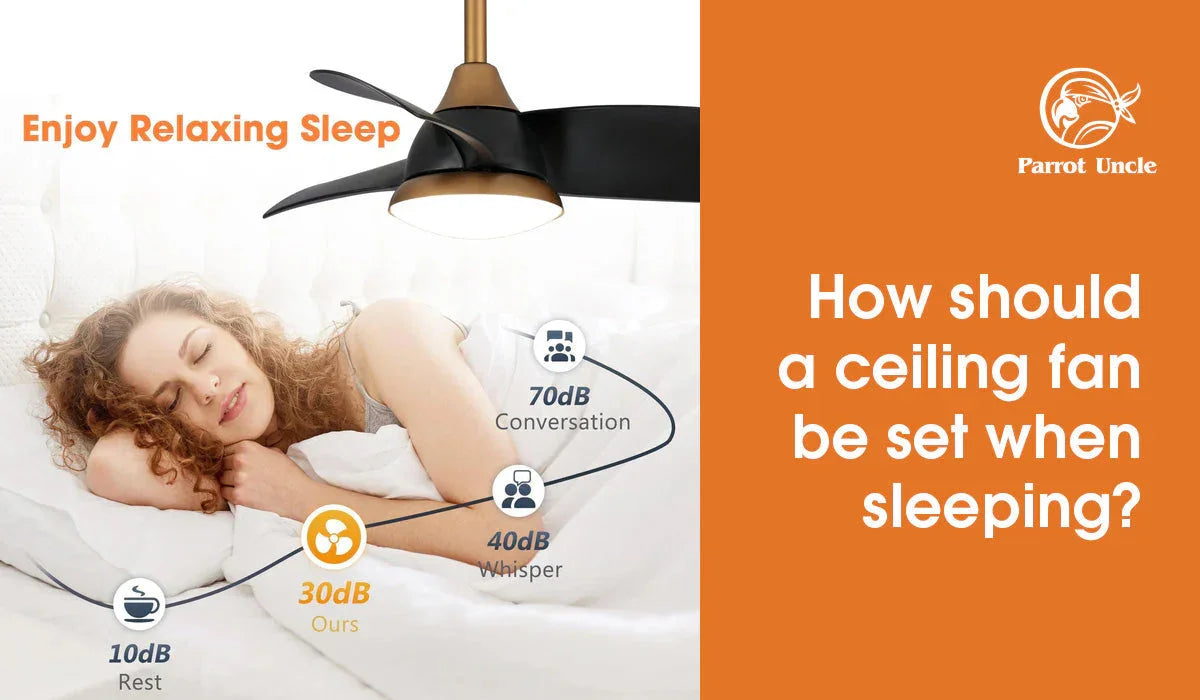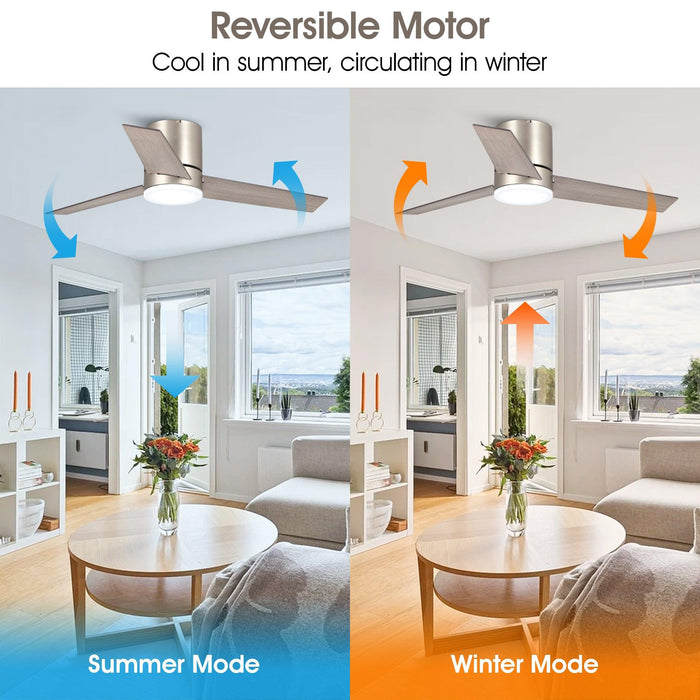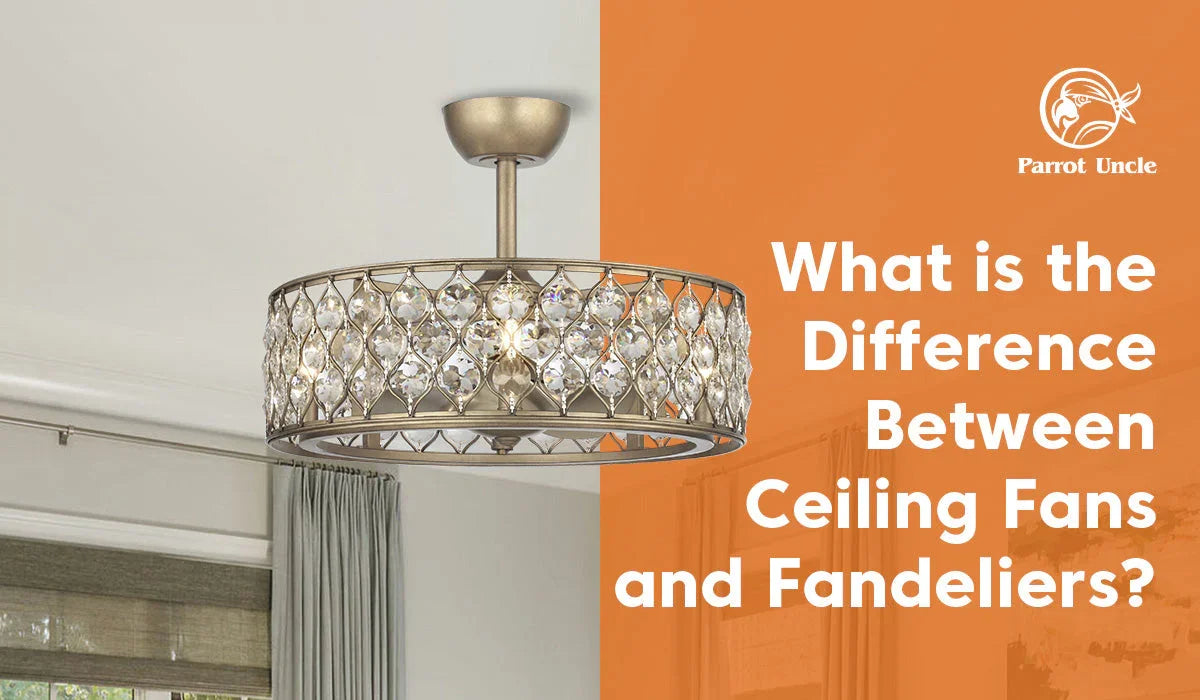Sleeping soundly is a cornerstone of overall well-being. However, achieving restful sleep can be a challenge. Many factors contribute to sleep quality, and one often-overlooked aspect is the proper setting of your ceiling fan. So, how should a ceiling fan be set when sleeping? This comprehensive guide delves into the optimal settings for ceiling fans to promote better sleep in 2025, providing actionable tips and tricks to transform your bedroom into a sanctuary of slumber.
Why Ceiling Fan Settings Matter for Sleep Quality
Before we dive into the "how," let's explore the "why." Why does the setting of your ceiling fan matter when you're trying to sleep? The answer lies in how our bodies regulate temperature during sleep.
-
Body Temperature Regulation: As you drift off to sleep, your core body temperature naturally decreases. A comfortable sleep environment helps facilitate this temperature drop, signaling to your body that it's time to rest. A ceiling fan aids this process by circulating air and creating a cooling effect.
-
Air Circulation: Stagnant air can feel stuffy and uncomfortable, disrupting sleep. A ceiling fan keeps air moving, preventing this sensation and promoting a fresher, more breathable atmosphere.
-
White Noise: For some, the gentle hum of a ceiling fan provides a soothing white noise effect, masking distracting sounds and promoting relaxation.
5 Powerful Tips for Optimizing Ceiling Fan Settings for Sleep
Now, let's get to the heart of the matter. How should you actually set your ceiling fan for optimal sleep? Consider these five powerful tips:
Tip 1: Direction Matters: Summer vs. Winter Modes
The direction of your ceiling fan's rotation is crucial. Most ceiling fans have a switch to reverse the direction.
-
Summer Mode (Counterclockwise): In the summer, set your fan to rotate counterclockwise. This pushes air downwards, creating a cooling breeze. This is probably what you're most familiar with.
-
Winter Mode (Clockwise): In the winter, reverse the fan's direction to rotate clockwise at a low speed. This pulls air upwards, circulating warm air that rises to the ceiling back down into the room. Note: The key here is low speed. You don't want a breeze, just gentle air circulation.
Why it Matters: Using the correct direction maximizes the fan's efficiency in regulating temperature.
Tip 2: Finding the Perfect Speed
The ideal fan speed is subjective and depends on individual preferences and ambient temperature.
-
Start Low: Begin with the lowest setting and gradually increase the speed until you find a comfortable level.
-
Experiment: Pay attention to how you feel at different speeds. Too fast, and you might feel cold or experience dry eyes. Too slow, and you might not notice a difference.
-
Consider Humidity: In humid environments, a slightly higher speed might be beneficial for improved air circulation and cooling.
Pain Point Addressed: Do you ever wake up feeling too cold or too hot? Finding the right speed prevents temperature-related sleep disturbances.
Tip 3: Timers for Automated Comfort
Many modern ceiling fans come equipped with timers. Use them to your advantage!
-
Set a Sleep Timer: Program the fan to turn off after a certain period. This can be particularly useful if you enjoy the fan's cooling effect as you fall asleep but don't need it all night.
-
Automated Schedules: Some smart fans allow you to create custom schedules based on the time of day or even room temperature.
Motivation: Imagine drifting off to sleep with the perfect breeze and waking up to a quiet, still room. Timers make this a reality.
Tip 4: Humidity Control
While ceiling fans directly cool by evaporating sweat, dehumidifiers and humidifiers play a part in keeping you comfortable for sleep.
- Dehumidifiers in Summer: During summer months, the humidity is high, so using a dehumidifier can help keep your room more comfortable for sleep.
- Humidifiers in Winter: During winter months, the air is more dry, so using a humidifier can help keep your room comfortable for sleep.
Tip 5: Combine with Other Cooling Strategies
A ceiling fan is a powerful tool, but it works best in conjunction with other cooling strategies.
-
Open Windows: During cooler nights, open windows to allow fresh air to circulate.
-
Use Lightweight Bedding: Opt for breathable fabrics like cotton or linen.
-
Optimize Air Conditioning: Use your air conditioner to cool the room down before bed, then rely on the ceiling fan to maintain a comfortable temperature throughout the night.
Thought Provoker: Are you relying solely on your ceiling fan for sleep comfort? Consider how you can combine it with other strategies for maximum effectiveness.
Common Mistakes to Avoid
Avoid these common pitfalls when using a ceiling fan for sleep:
-
Ignoring Seasonal Adjustments: Forgetting to switch the fan's direction between summer and winter modes.
-
Setting the Speed Too High: Creating an uncomfortable draft that disrupts sleep.
-
Neglecting Maintenance: Dusting the fan blades regularly to ensure optimal performance. Dust buildup can reduce efficiency and even contribute to allergies.
-
Not Considering Individual Needs: Assuming that what works for one person will work for everyone. Experiment to find the settings that are best for you.
Step-by-Step Guide: Optimizing Your Ceiling Fan for Sleep
Follow these steps to fine-tune your ceiling fan settings for a better night's sleep:
- Determine the Season: Is it summer or winter? Adjust the fan's direction accordingly.
- Start with Low Speed: Set the fan to the lowest speed setting.
- Observe and Adjust: Lie in bed for a few minutes and assess how you feel. Gradually increase the speed if necessary.
- Experiment with Timers: If your fan has a timer function, experiment with different settings to see what works best.
- Combine with Other Strategies: Consider using lightweight bedding, opening windows, or adjusting your air conditioner.
- Monitor and Refine: Pay attention to how you sleep over the next few nights and make further adjustments as needed.
Pros and Cons of Using a Ceiling Fan for Sleep
Let's weigh the advantages and disadvantages:
Pros:
- Improved Air Circulation: Keeps the room feeling fresh and comfortable.
- Cooling Effect: Helps regulate body temperature and prevent overheating.
- White Noise: Masks distracting sounds and promotes relaxation.
- Energy Efficiency: Uses less energy than air conditioning.
- Cost-Effective: Ceiling fans are relatively cheap to operate.
Cons:
- Dry Air: Can contribute to dry skin and eyes, especially in already dry environments.
- Dust Accumulation: Requires regular cleaning to prevent dust buildup.
- Draft Potential: Can create an uncomfortable draft if the speed is too high.
- Not Effective in Extreme Heat: May not be sufficient for cooling in very hot climates.
Table 1: Comparing Ceiling Fan Usage with Other Sleep Aids
| Sleep Aid | Pros | Cons | Ceiling Fan Integration |
|---|---|---|---|
| Air Conditioning | Powerful cooling, precise temperature control | High energy consumption, can be drying, potential for drafts | Complements, reduces AC load |
| White Noise Machine | Consistent and customizable sound masking | Requires electricity, can be repetitive for some | Replaces if fan noisy |
| Weighted Blanket | Promotes relaxation and reduces anxiety | Can be too warm for some, may feel restrictive | Neutral, depends on warmth |
| Sleep Mask | Blocks out light effectively | Can be uncomfortable for some, may feel claustrophobic | Beneficial |
| Humidifier/Dehumidifier | Regulates humidity levels, addressing dryness or excessive moisture | Requires maintenance, potential for mold growth if not cleaned properly | Synergistic |
Market Insights: The Evolving Landscape of Sleep Technology
The market for sleep technology is booming. According to a report by Grand View Research, the global sleep tech devices market was valued at USD 15.8 billion in 2022 and is expected to reach USD 35.4 billion by 2030, growing at a CAGR of 10.6% from 2023 to 2030. This growth is driven by increasing awareness of the importance of sleep, rising prevalence of sleep disorders, and advancements in technology.
Ceiling fans, while a relatively simple technology, remain a staple in many bedrooms due to their affordability and effectiveness. However, they are increasingly being integrated with smart home systems and other sleep technologies. Smart ceiling fans can be controlled via smartphone apps, voice assistants, and can even automatically adjust their speed based on room temperature and humidity.
Future Trends: What to Expect in Sleep-Optimized Ceiling Fans
Looking ahead, here are some trends to watch for in the world of ceiling fans and sleep:
- Smart Fan Integration: Expect to see more ceiling fans with advanced smart features, such as automated scheduling, voice control, and integration with other smart home devices.
- Biometric Sensors: Some fans may incorporate biometric sensors to monitor your sleep and adjust the fan's settings accordingly. For example, the fan could automatically slow down if it detects that you are starting to feel cold.
- Improved Energy Efficiency: Manufacturers will continue to focus on improving the energy efficiency of ceiling fans, making them an even more sustainable option for cooling.
- Personalized Comfort: Fans will become more customizable, allowing you to fine-tune the airflow, noise level, and other settings to your individual preferences.
- Enhanced Aesthetics: Expect to see more stylish and modern ceiling fan designs that complement a variety of bedroom decors.
Case Detail: Comparing Traditional vs. Smart Ceiling Fan Sleep Experience
To illustrate the difference between traditional and smart ceiling fans, let's examine two hypothetical scenarios:
Case 1: Traditional Ceiling Fan
-
Scenario: Sarah has a traditional ceiling fan in her bedroom. She manually adjusts the speed each night before bed, based on how hot she feels. Sometimes, she wakes up in the middle of the night feeling too cold or too hot and has to get out of bed to adjust the fan.
-
Challenges: Inconsistent temperature regulation, manual adjustments required, potential for sleep disruption.
-
Pain Points: Difficulty maintaining a comfortable temperature throughout the night, inconvenience of manual adjustments.
Case 2: Smart Ceiling Fan
-
Scenario: John has a smart ceiling fan in his bedroom. He has programmed the fan to automatically adjust its speed based on the room temperature. He has also set a sleep timer so that the fan turns off after a few hours. The fan is integrated with his smart home system, so he can control it with his voice.
-
Benefits: Consistent temperature regulation, automated adjustments, convenient voice control, improved sleep quality.
-
Motivations: Effortless temperature control, convenient automation, improved sleep experience.
Table 2: Traditional Fan vs. Smart Fan
| Feature | Traditional Fan | Smart Fan |
|---|---|---|
| Speed Control | Manual | Automated, app-controlled, voice-controlled |
| Direction Control | Manual | Automated, app-controlled, voice-controlled |
| Timer | May have, manual | Programmable, app-controlled |
| Integration | None | Smart home integration, biometric sensors |
| Temperature Reg. | Inconsistent | Consistent |
| Energy Efficiency | Basic | Potentially higher with automation |
| Cost | Lower | Higher |
Highlights and Standing Out: What Sets a Great Ceiling Fan Apart?
What makes a ceiling fan truly exceptional for sleep? Here are some key factors:
- Quiet Operation: Look for fans with low-noise motors and well-balanced blades.
- Effective Airflow: Choose a fan that can effectively circulate air without creating an uncomfortable draft.
- Energy Efficiency: Opt for a fan with an Energy Star rating.
- Smart Features: Consider a smart fan for automated control and integration with your smart home system.
- Aesthetics: Select a fan that complements your bedroom decor.
- Durability: Invest in a well-built fan that will last for years.
The Current Status: Meeting the Needs of Sleep-Conscious Consumers
Ceiling fan manufacturers are increasingly focusing on meeting the needs of sleep-conscious consumers. They are developing fans with quieter motors, more efficient blades, and advanced smart features. They are also incorporating sleep-tracking technology and personalized comfort settings.
What can we do to further improve the sleep experience with ceiling fans? Here are some ideas:
- Develop even quieter motors.
- Create more customizable airflow patterns.
- Integrate with other sleep-enhancing technologies, such as sleep trackers and smart mattresses.
- Provide more educational resources to help consumers optimize their ceiling fan settings for sleep.
Tips and Tricks for Maximizing Sleep Quality with a Ceiling Fan
Here are some additional tips and tricks to help you get the most out of your ceiling fan:
- Dust the fan blades regularly. Dust can reduce the fan's efficiency and contribute to allergies.
- Consider the size of your room. A larger room will require a larger fan to effectively circulate air.
- Pay attention to the blade pitch. The blade pitch is the angle of the blades. A steeper blade pitch will move more air.
- Experiment with different light settings. Some ceiling fans have dimmable lights that can help create a relaxing atmosphere.
Strategies for Optimizing Air Flow
- Strategic Placement: Ensure the fan is centered in the room for even air distribution.
- Clearance is Key: Keep furniture and other obstructions away from the fan to allow for unobstructed airflow.
- Layering with Other Cooling: Combine fan use with strategic window placement to optimize cross-ventilation.
Why It Matters and How It Benefits You
Optimizing your ceiling fan settings for sleep is not just about comfort; it's about investing in your overall health and well-being. By creating a comfortable and sleep-friendly environment, you can improve your sleep quality, boost your energy levels, and enhance your mood.
Benefits include:
- Improved Sleep Quality: Fall asleep faster, stay asleep longer, and wake up feeling more refreshed.
- Increased Energy Levels: Get more done during the day and feel less fatigued.
- Enhanced Mood: Improve your mood and reduce stress levels.
- Better Health: Reduce your risk of developing chronic health conditions associated with poor sleep.
Effective Strategies for Choosing the Right Ceiling Fan
- Consider Room Size: Match fan size to room dimensions to ensure adequate air circulation.
- Blade Pitch Matters: A higher blade pitch pushes more air.
- Motor Quality: Look for a high-quality, energy-efficient motor for quiet and reliable operation.
- Smart Features: Consider models with smart features for automated temperature and airflow control.
Table 3: Trouble Shooting Common Ceiling Fan Problems
| Problem | Possible Cause(s) | Solution(s) |
|---|---|---|
| Fan is noisy | Loose screws, unbalanced blades, motor issues | Tighten screws, balance blades using a balancing kit, lubricate motor (if applicable) |
| Fan doesn't rotate properly | Motor issues, wiring problems | Check wiring connections, replace motor if necessary |
| Fan doesn't provide enough air | Incorrect size for room, low blade pitch | Consider a larger fan or one with a steeper blade pitch |
| Light flickers | Loose bulb, faulty wiring, incompatible dimmer switch | Tighten bulb, check wiring connections, replace dimmer switch with compatible model |
| Fan is wobbling | Unbalanced blades, loose mounting bracket | Balance blades using a balancing kit, tighten mounting bracket |
Table 4: How to Optimize Fan Settings by Climate
| Climate | Recommended Settings and Strategies | Rationale |
|---|---|---|
| Hot & Humid | Higher speeds, dehumidifier use, lightweight bedding | Promotes evaporation of sweat, reduces moisture, keeps you cool |
| Hot & Dry | Lower speeds, humidifier use, close windows during the day | Prevents excessive drying of air, adds moisture, maintains a cooler temperature |
| Cold & Dry | Reverse direction (clockwise), low speed, humidifier use | Circulates warm air, adds moisture, prevents dryness |
| Mild & Temperate | Adjust speed according to comfort level, open windows for fresh air | Allows for personalized comfort, promotes natural ventilation |
FAQs: Addressing Your Burning Questions
Here are some frequently asked questions about using a ceiling fan for sleep:
- Is it safe to sleep with a ceiling fan on? Yes, it is generally safe to sleep with a ceiling fan on. However, some people may experience dry eyes or skin due to the air circulation.
- Can a ceiling fan help with allergies? A ceiling fan can help circulate air and reduce allergens in the air. However, it is important to dust the fan blades regularly to prevent dust buildup.
- What is the best ceiling fan for sleep? The best ceiling fan for sleep is one that is quiet, energy-efficient, and has adjustable speed settings. Smart fans with automated control are also a good option.
- How do I clean my ceiling fan? You can clean your ceiling fan with a damp cloth or a vacuum cleaner with a brush attachment.
- Can I use a ceiling fan in a baby's room? Yes, you can use a ceiling fan in a baby's room. However, it is important to keep the fan at a low speed and make sure that the baby is not exposed to direct drafts.
- Will a ceiling fan help with snoring? While not a cure, improving the air quality and ventilation in the room may help reduce snoring for some individuals.
- Can I install a ceiling fan myself? While some homeowners may be comfortable installing a ceiling fan themselves, it's generally recommended to hire a qualified electrician to ensure proper and safe installation. Improper installation can lead to safety hazards and damage to the fan or your home's electrical system.
- How often should I replace my ceiling fan? The lifespan of a ceiling fan can vary depending on the quality of the fan and how often it is used. However, a well-maintained ceiling fan can last for 10-20 years. If your fan is making excessive noise, wobbling, or not functioning properly, it may be time to replace it.
Future Trending and How to Improve
As technology continues to advance, we can expect to see even more innovative ceiling fan designs and features that cater to the needs of sleep-conscious consumers. Some potential future trends include:
- Biometric feedback integration: Fans that automatically adjust their settings based on real-time biometric data, such as heart rate and body temperature.
- Personalized climate control: Fans that allow users to create customized sleep profiles based on their individual preferences and needs.
- AI-powered sleep optimization: Fans that use artificial intelligence to learn your sleep patterns and optimize their settings for maximum comfort and restorative sleep.
Conclusion:
Optimizing your ceiling fan settings is a simple yet powerful way to improve your sleep quality. By following these tips and tricks, you can create a comfortable and sleep-friendly environment that promotes restful and restorative sleep. Remember to experiment with different settings to find what works best for you, and don't be afraid to invest in a smart ceiling fan with advanced features for even greater control and convenience. Sweet dreams!







